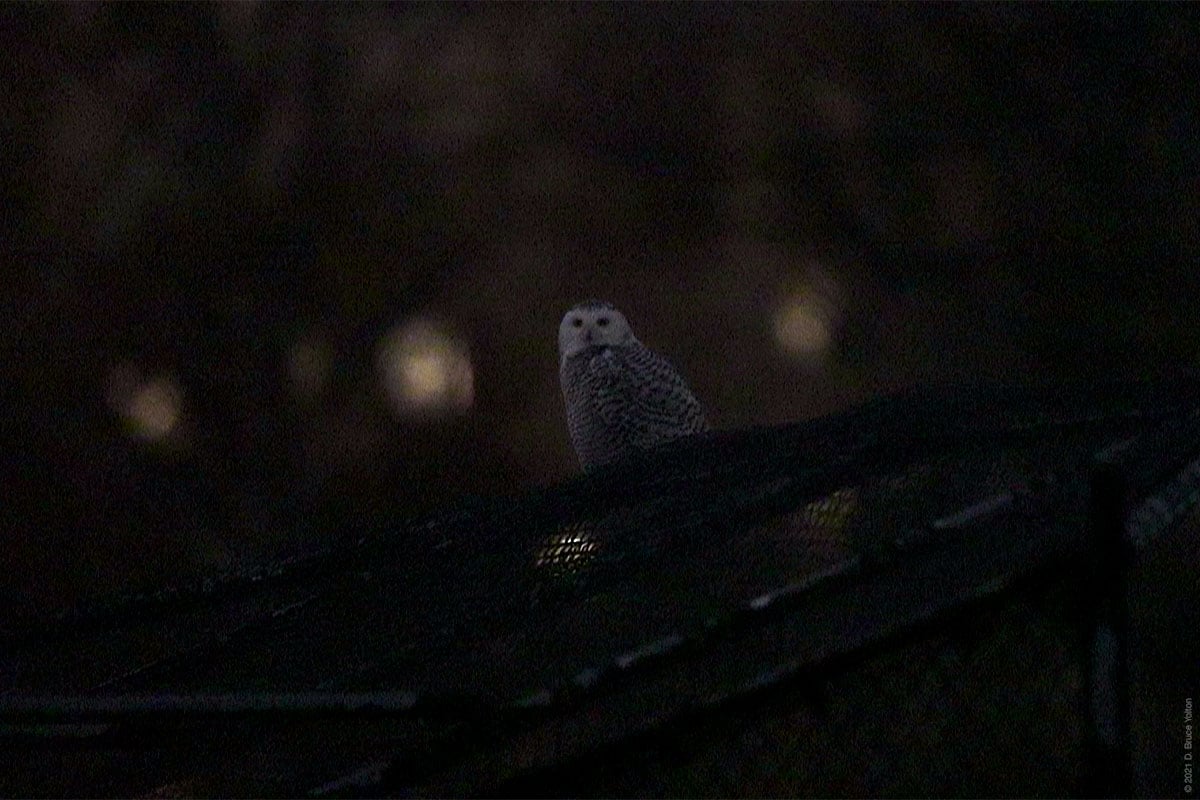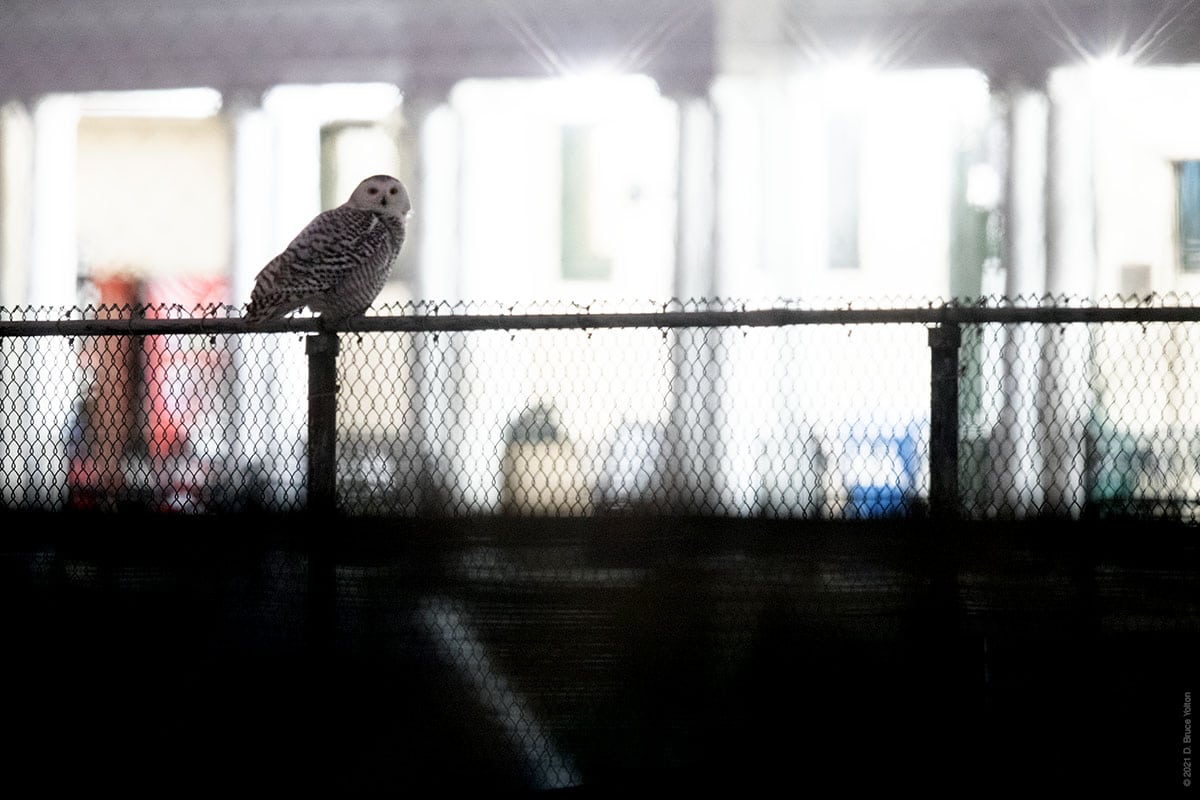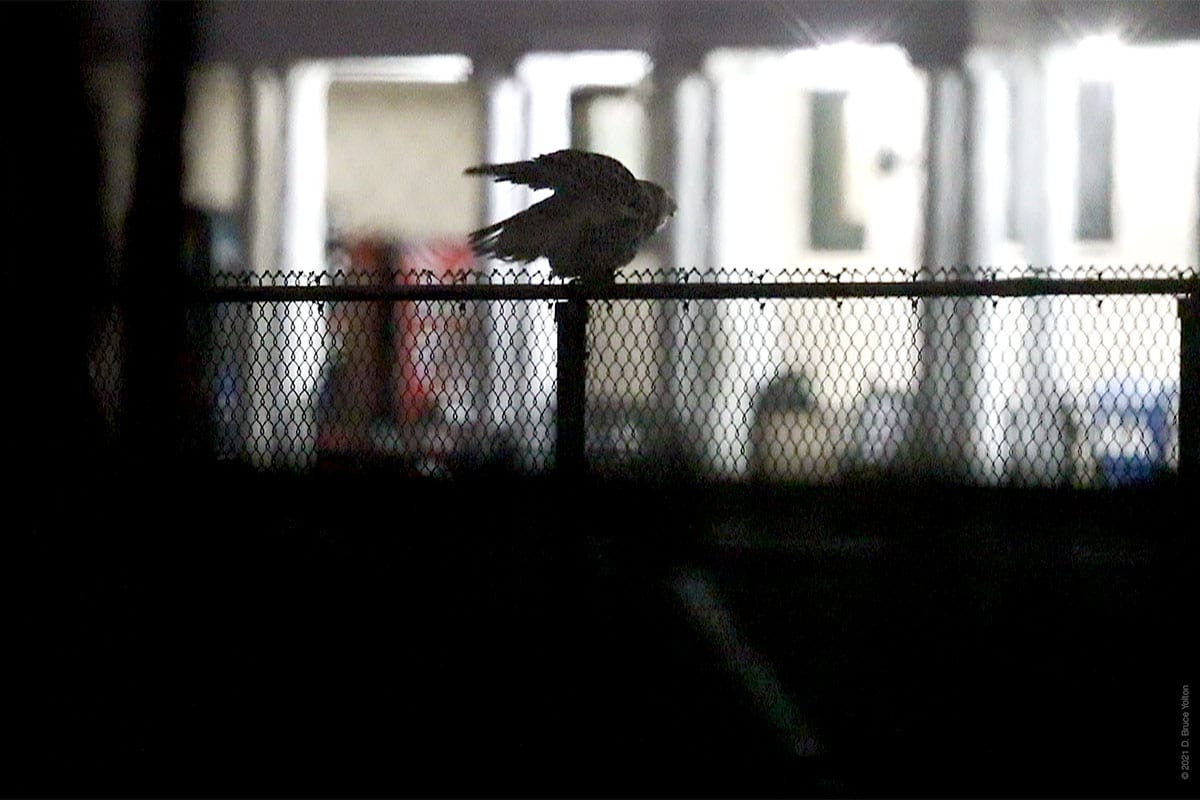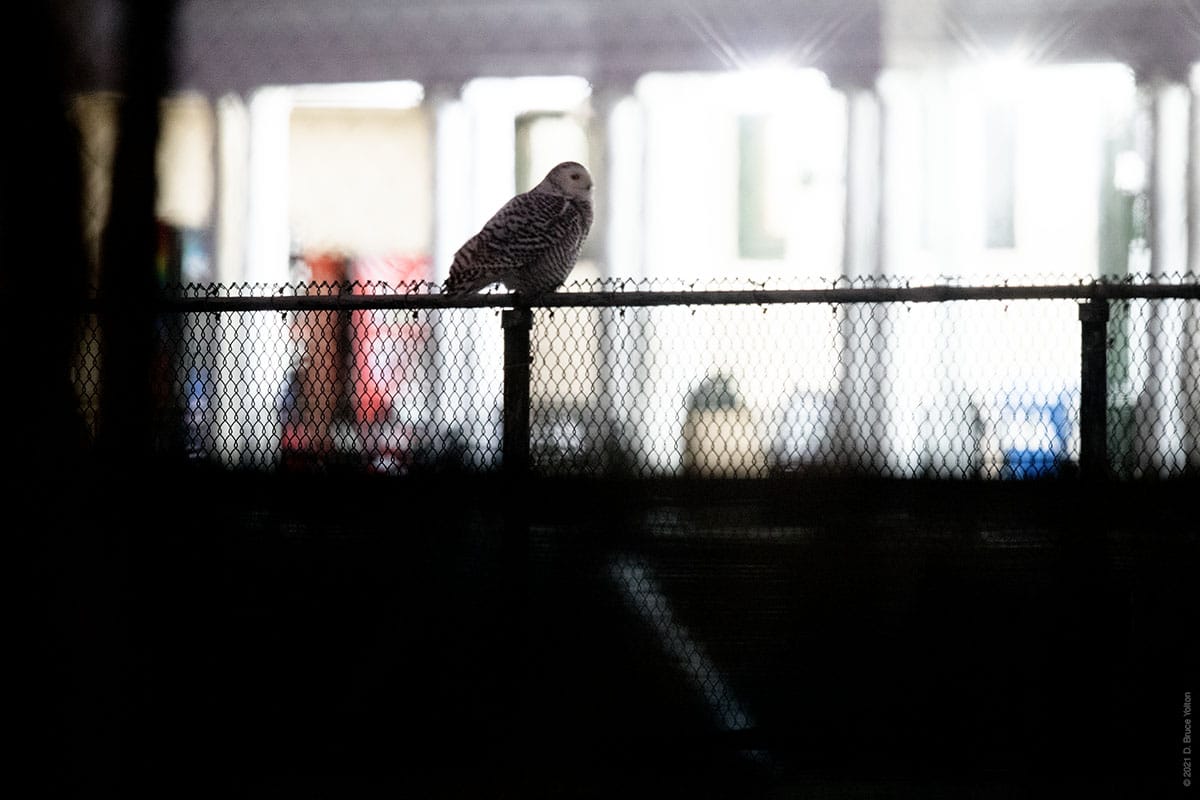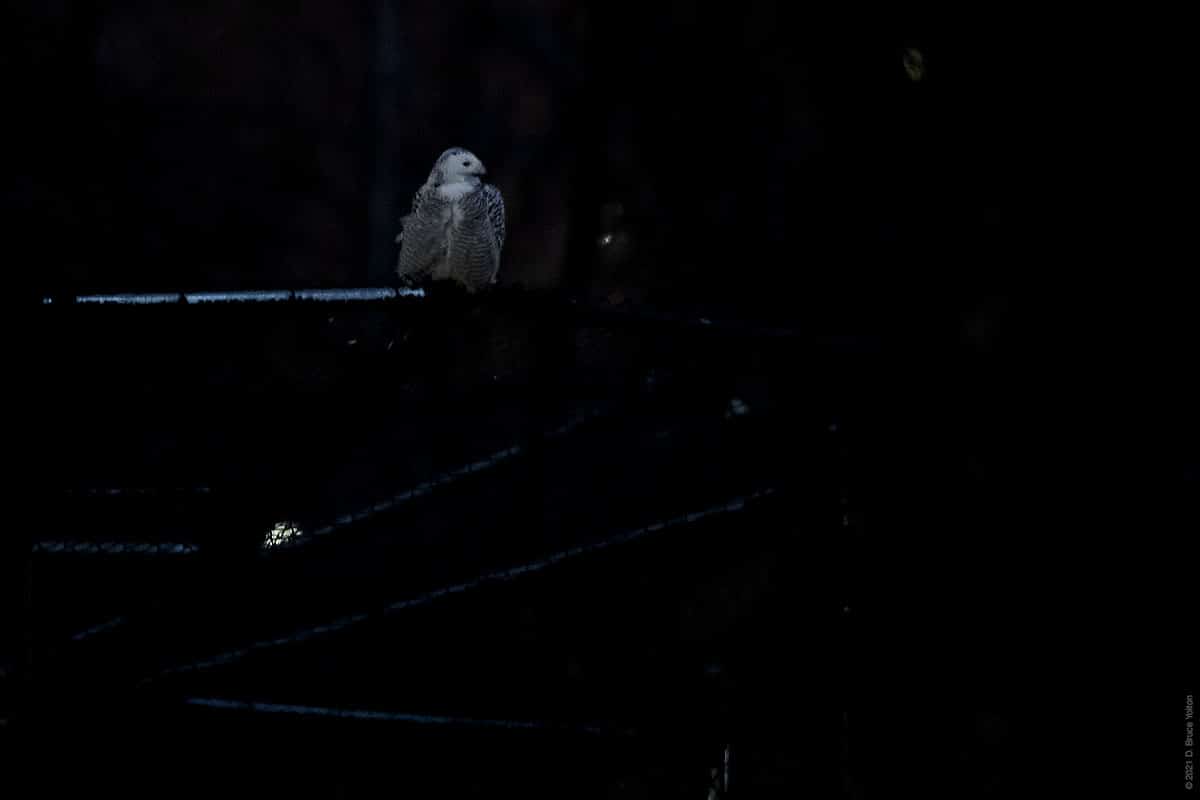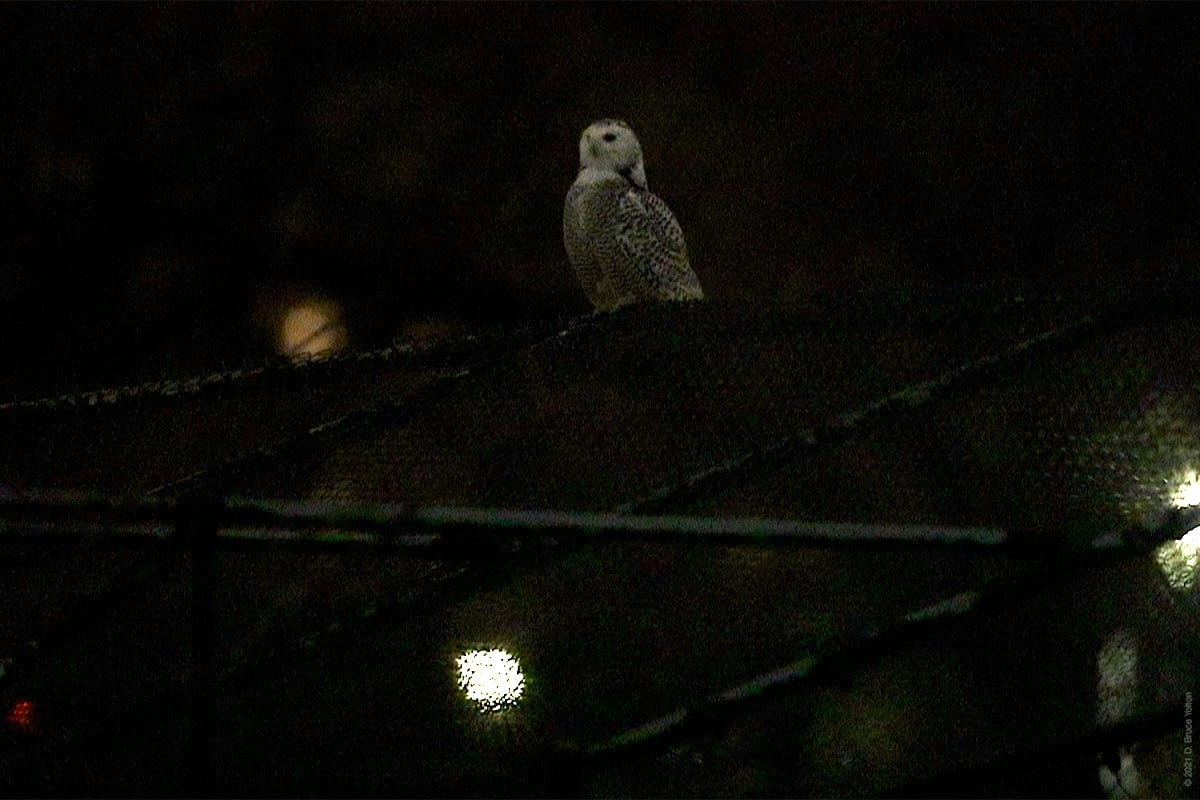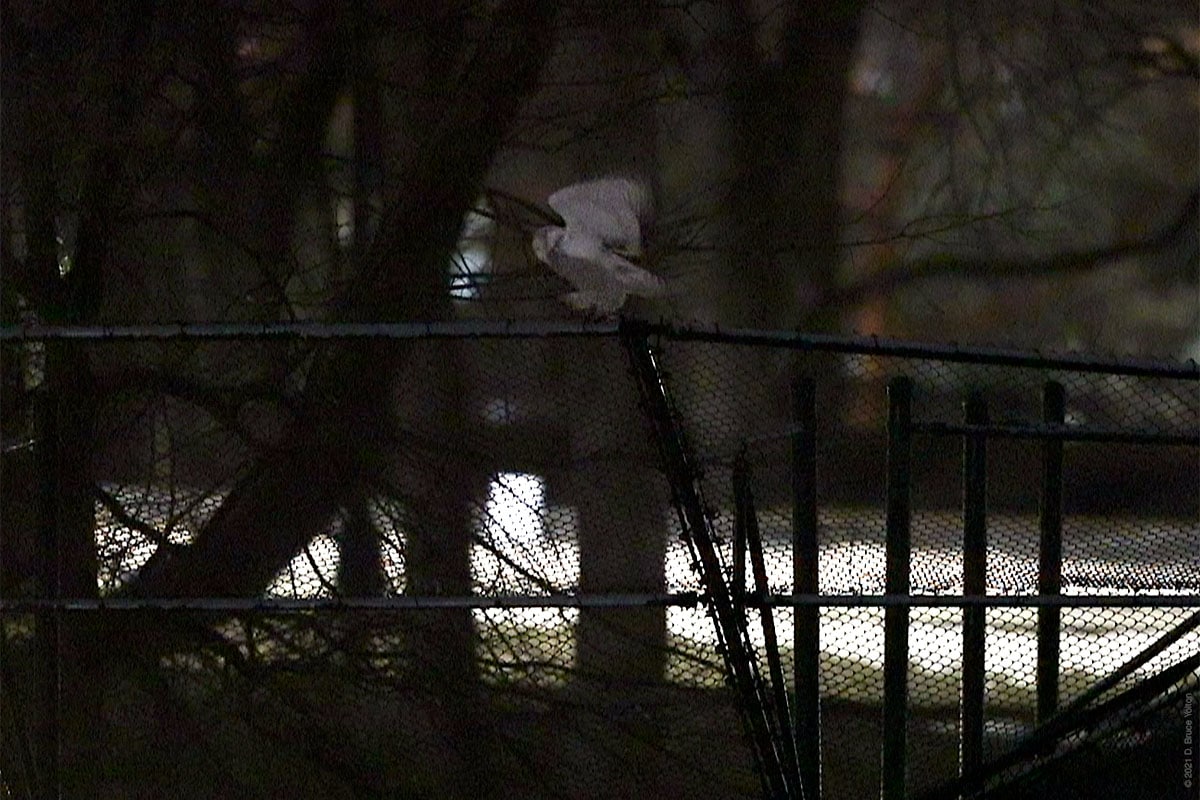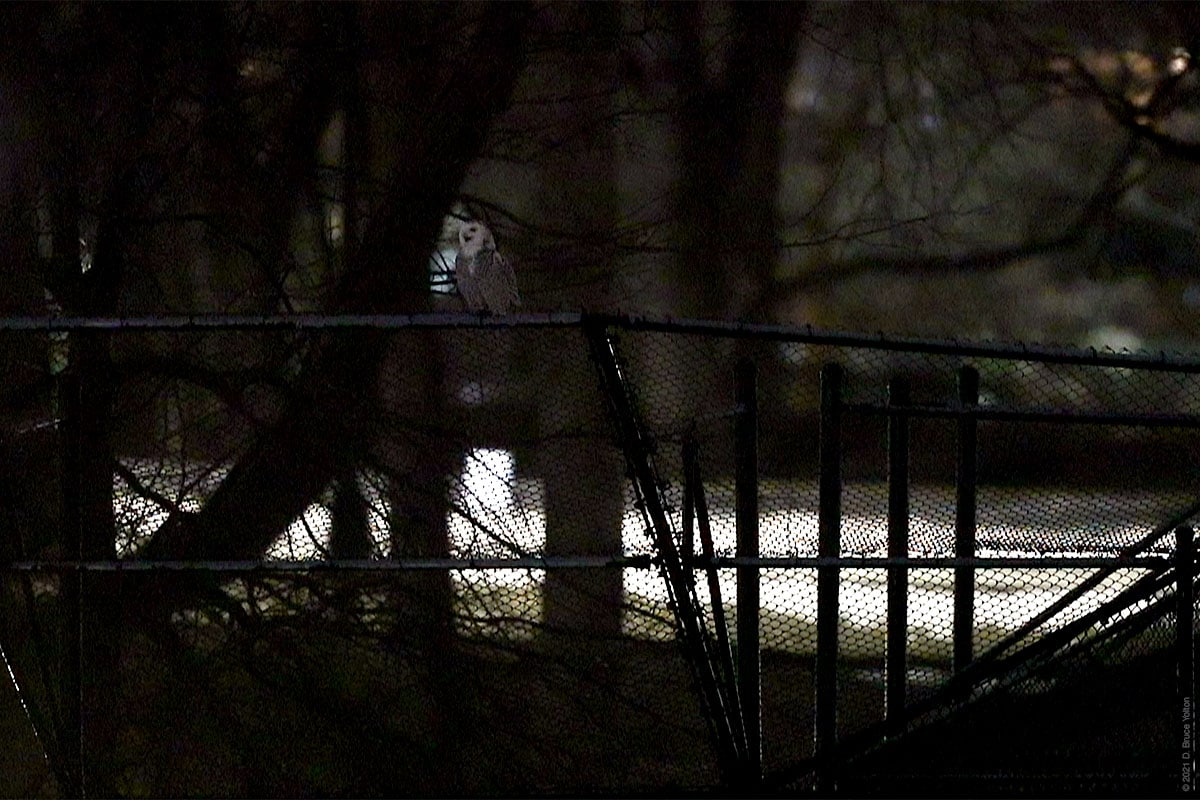The Snowy Owl is very good at adjusting her schedule to avoid people and dogs. She did this tonight by avoiding the Compost Heap area, which has had crowds the last few nights by going directly to the ballfields.
Owl watching takes patience, and an understanding that it might take a few visits to see the owl you’re looking for. It also requires you to take the time to figure out how not to disturb the owl, and can require a commitment of three to four hours for a few nights in a row. Last night, those who were patient, and had learned her habits watched her for over two hours, quietly from a safe distance. She only moved after the Eastern Coyote arrived.
The Manhattan Bird Alert is promoting this owl as an easy thing to go see. On a few nights she has been, but in reality she can be hard to find, and more importantly, it takes effort to watch her without bothering her.
This Snowy Owl is much more difficult to observe than other owls because you can’t see her fly out of roost like you can with a Barred Owl or Great Horned Owl. Watching her isn’t about just showing up at a specific time, at a specific tree.
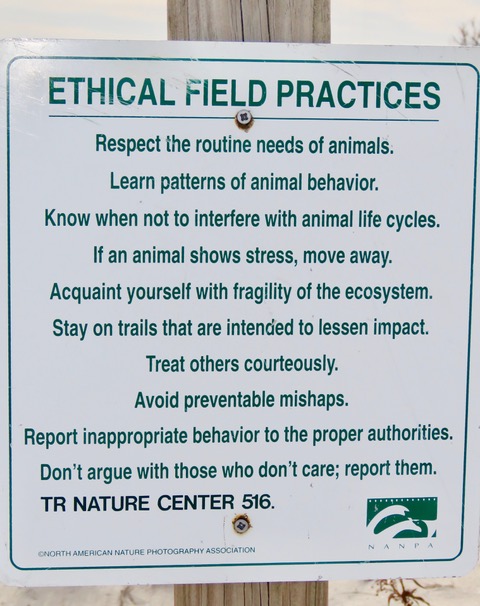
Bird watching isn’t Pokémon Go. It isn’t about running after something, seeing it, and moving on to the next species. This relatively new Twitter based phenomenon of running after sightings is the equivalent of fast food. Lots of empty calories. One of the great joys of bird watching is observing a species and learning what makes it unique. You can’t do that if you’re rushing around directed by Twitter.
I was sent a sign that is posted near a Snowy Owl location at Jones Beach by Jeff Kraus, created by the North American Nature Photography Association (nanpa.org). It’s recommendations apply to Central Park as well.
It’s possible to observe this owl, while still letting her hunt, eat and live with minimal interference.
